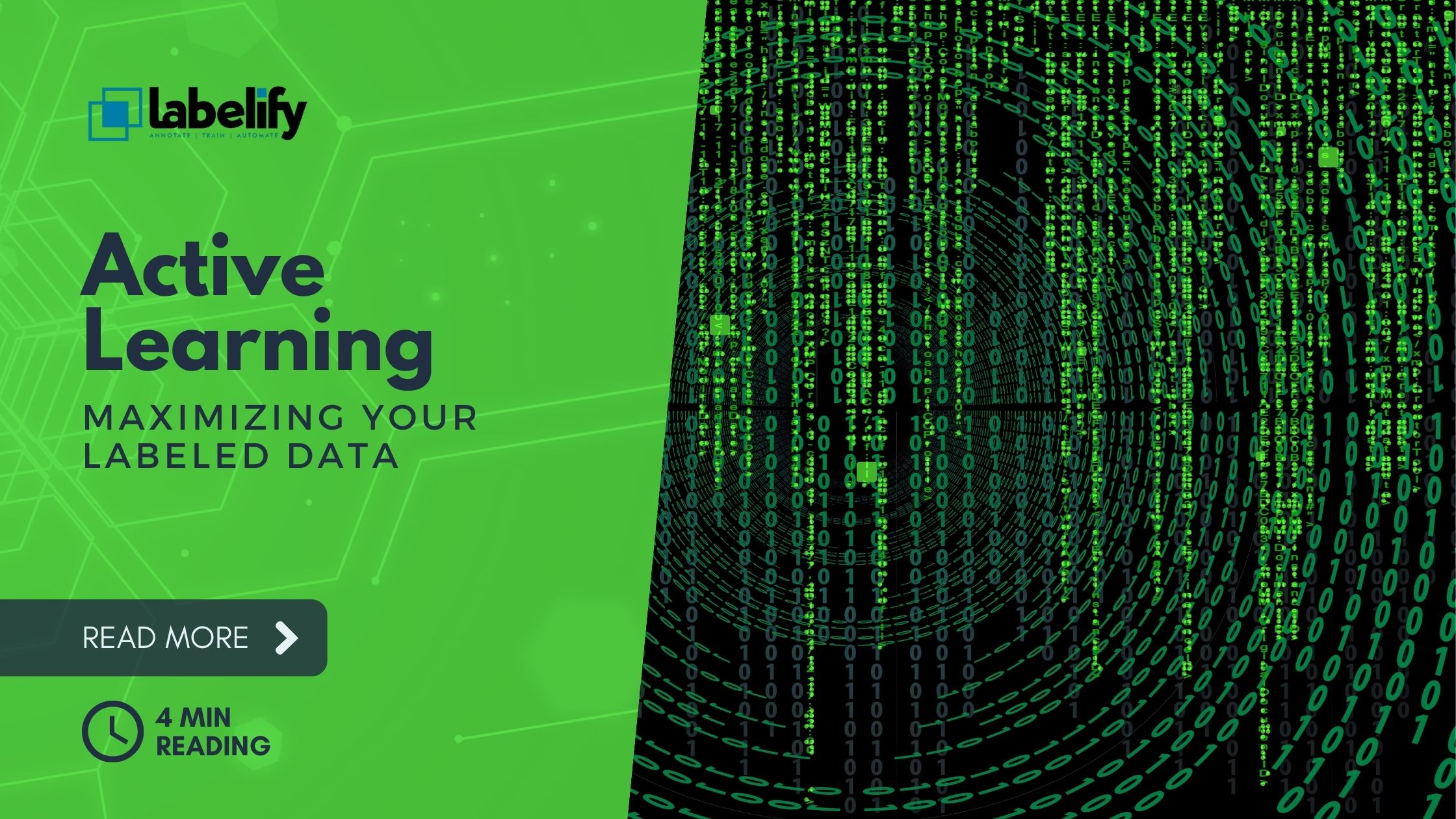In the realm of machine learning, Active Learning stands as an innovative framework that revolutionizes training efficiency. By incorporating human input, this approach reduces the need for extensive labeled data, instead focusing on selectively labeling a small portion of the dataset.
Leveraging a range of active learning methods, such as stream-based selective sampling and query synthesis, this framework finds applications across various domains of Artificial Intelligence. However, while Active Learning offers considerable advantages in terms of reducing labeling effort and enhancing model accuracy, its performance benefits may be limited in certain scenarios.
This article delves into the concepts, methods, applications, benefits, limitations, and specific use cases of Active Learning in machine learning.
Key Takeaways
- Active Learning is a human-in-the-loop approach in machine learning.
- It involves training the model on a small labeled dataset and making predictions on unlabeled data.
- The model asks a human user to label uncertain samples for further training, improving training efficiency.
- Active Learning is widely used in various domains of Artificial Intelligence, including computer vision, natural language processing, and speech recognition.
Active Learning Framework
The Active Learning Framework is a human-in-the-loop approach in machine learning where only a small portion of the dataset is labeled for model training. This innovative approach revolutionizes the traditional machine learning paradigm by incorporating active learning algorithms and techniques.
Unlike passive learning, where the model is trained on a fully labeled dataset, active learning empowers the model to make predictions on unlabeled data and actively seeks user input to label uncertain samples for further training. By leveraging the expertise of human annotators, active learning improves training efficiency and reduces the need for extensive manual labeling.
This liberation from the burden of labeling large datasets opens up exciting possibilities in various domains, enabling optimal performance with few labeled samples. Active learning is a visionary approach that holds tremendous potential in healthcare, finance, and other industries, where limited annotated data is available but accurate models are crucial.
Active Learning Methods
One of the key aspects of the Active Learning Framework is the utilization of various active learning methods. These methods are designed to enhance the learning process by selecting the most informative data samples for annotation, thereby reducing the effort required for labeling.
Three common active learning methods are stream-based selective sampling, pool-based sampling, and query synthesis methods. Stream-based selective sampling makes decisions for each incoming data point, while pool-based sampling selects a batch of samples from a large pool of unlabeled data. Query synthesis methods generate training instances based on unlabeled data, further enhancing the active learning process.
Informativeness measures play a crucial role in active learning algorithms and techniques, helping to determine which data samples should be annotated. Stream-based selective sampling utilizes an informativeness measure to request annotations, while pool-based sampling ranks samples based on informativeness.
These active learning methods have the potential to revolutionize the field of machine learning by enabling optimal performance with limited labeled samples.
Applications of Active Learning
Applications of Active Learning range across various domains and have proven to be particularly effective in computer vision tasks, reducing the reliance on labeled training data and improving the accuracy of machine learning models.
Active learning in healthcare holds immense potential for revolutionizing medical diagnosis and treatment. By actively selecting the most informative data points to label, active learning can help in identifying patterns and predicting disease outcomes. This can lead to more accurate and personalized healthcare interventions.
Active learning in finance can also be highly beneficial. With the vast amount of financial data available, active learning can assist in making better predictions and informed decisions in areas such as risk assessment, fraud detection, and portfolio optimization. By actively selecting the most relevant data points for training, active learning enables financial institutions to optimize their models and make more accurate predictions, ultimately leading to improved financial outcomes.
Benefits and Limitations of Active Learning
Active Learning offers a range of benefits and limitations in machine learning, which are crucial to consider for optimizing model accuracy and reducing data labeling effort.
When compared to passive learning, where all data is labeled before model training, active learning algorithms allow for a more efficient use of resources by selectively labeling only the most informative data points. This mimics the human learning process, where learners actively seek out new information to improve their understanding.
Active learning algorithms utilize unlabeled data effectively, making them particularly useful in scenarios where labeled data is scarce or expensive to obtain. However, it is important to note that active learning may have limited performance benefits in some cases, especially when the dataset is already well-labeled or when the informativeness measure used is not well-defined.
Active Learning in Computer Vision
Active Learning plays a significant role in enhancing the performance of computer vision tasks. In comparison to passive learning, where the model passively learns from the labeled dataset, active learning actively selects the most informative samples for annotation, reducing the need for labeled data.
This is particularly beneficial in deep learning, where labeled data is often scarce and expensive to obtain. Active learning in computer vision involves methods such as stream-based selective sampling, pool-based sampling, and query synthesis. These methods leverage informativeness measures to decide which samples to annotate or select for further training.
Active Learning for Image Restoration
Image restoration can benefit from the active learning framework, which leverages informative measures to select the most relevant samples for annotation and training. By incorporating active learning techniques into image restoration tasks, we can enhance the accuracy and efficiency of the restoration process.
Here are four reasons why active learning is a game-changer for image restoration:
- Active learning for medical diagnosis: Active learning enables the identification and restoration of medical images with anomalies, aiding in the early detection and diagnosis of diseases.
- Active learning for anomaly detection: Active learning techniques can effectively identify and restore images with anomalies or outliers, improving the overall quality and reliability of the restored images.
- Optimal performance with limited labeled samples: Active learning techniques minimize the need for extensive labeled training data, allowing image restoration models to achieve optimal performance even with a limited amount of annotated samples.
- Liberating the restoration process: Active learning liberates the image restoration process by reducing the reliance on manual annotation and enhancing the automation of the restoration pipeline. This liberation enables faster and more accurate restoration results, benefiting various domains such as healthcare and beyond.
Active Learning in Natural Language Processing
Natural Language Processing (NLP) benefits from the incorporation of active learning techniques, which enhance the efficiency and accuracy of language processing tasks.
Active learning for sentiment analysis and named entity recognition are two key areas where active learning is applied in NLP.
In sentiment analysis, active learning helps in selecting the most informative and uncertain samples for annotation, thereby improving the sentiment classification model's performance with limited labeled data.
Similarly, in named entity recognition, active learning assists in identifying and labeling important entities by utilizing the uncertainty of the model's predictions.
By incorporating active learning into NLP, the need for extensive labeled data is reduced, enabling optimal performance with fewer labeled samples.
This approach has significant potential in various industries, including healthcare, finance, and others, where accurate language processing is crucial for decision-making.
Active Learning for Speech Recognition
Speech recognition benefits from the integration of active learning techniques, which enhance the efficiency and accuracy of the speech processing tasks. Active learning for speech recognition opens up new possibilities for improved performance and expanded applications in this domain.
Here are four exciting ways active learning can revolutionize speech recognition:
- Active learning for sentiment analysis: By actively selecting and annotating speech samples that represent different sentiment categories, the model can learn to recognize and understand emotions in speech, leading to more accurate sentiment analysis.
- Active learning for anomaly detection: Active learning can be used to identify and label speech samples that deviate from the norm, enabling the development of robust anomaly detection systems in speech recognition.
- Stream-based selective sampling for real-time speech recognition: Active learning methods, such as stream-based selective sampling, can make instant decisions on incoming speech data, improving real-time speech recognition performance.
- Pool-based sampling for efficient training: With pool-based sampling, active learning can select a batch of diverse and informative speech samples from a large pool of unlabeled data, reducing the need for extensive labeling efforts while still achieving high model accuracy.
Through active learning, speech recognition can reach new heights of accuracy and efficiency, empowering users with improved speech processing capabilities in various applications and industries.
Frequently Asked Questions
What Is the Main Goal of Active Learning in Machine Learning?
The main goal of active learning in machine learning is to optimize the training process by actively selecting the most informative samples for annotation.
By involving human feedback, active learning reduces the need for extensive labeled data, thus saving time and effort in the data labeling process.
The benefits of active learning include improved model accuracy with minimal external help and effective utilization of unlabeled data.
However, it is important to note that active learning may have limited performance benefits in certain scenarios.
How Does Active Learning Differ From Traditional Machine Learning Approaches?
Active learning differs from traditional machine learning approaches in that it incorporates a human-in-the-loop approach and actively seeks informative samples for training.
Unlike passive learning, where the model is trained on pre-labeled data, active learning only labels a small portion of the dataset. The model then makes predictions on the unlabeled data, and asks a human user to label uncertain samples for further training.
This iterative process improves training efficiency and reduces the need for extensive labeled data. Various active learning algorithms, such as stream-based selective sampling and pool-based sampling, employ different strategies to select informative samples for annotation.
What Are Some Common Methods Used in Active Learning?
Some common methods used in active learning include:
- Semi-supervised learning: This method combines labeled and unlabeled data to improve model performance. By utilizing both types of data, the model can learn from a larger pool of examples and potentially achieve better accuracy.
- Uncertainty sampling: This method selects samples that the model is uncertain about for labeling. By focusing on areas of high uncertainty, active learning can maximize learning efficiency and prioritize the acquisition of new information.
These methods play a crucial role in active learning as they enable the effective utilization of limited labeled data and help improve the accuracy of machine learning models.
Can Active Learning Be Applied to Domains Other Than Computer Vision and Natural Language Processing?
Active learning, an innovative and ambitious approach in machine learning, extends beyond computer vision and natural language processing domains. Its potential applications are vast, including active learning in financial forecasting and active learning in biomedical research.
What Are the Potential Limitations or Drawbacks of Using Active Learning in Machine Learning?
Potential challenges and limitations of using active learning in machine learning include the impact on model performance and the need for careful selection of informativeness measures.
While active learning reduces data labeling effort and improves model accuracy with fewer labeled samples, it may have limited performance benefits in certain cases.
To overcome these challenges, innovative approaches that integrate active learning with other techniques, such as transfer learning or ensemble methods, can be explored. This visionary approach can push the boundaries of active learning and unlock its full potential in various domains of machine learning.
Conclusion
In conclusion, Active Learning is a powerful framework in machine learning that improves training efficiency by selectively labeling data for model training. It offers benefits in reducing data labeling effort and effectively utilizing unlabeled data. However, its performance benefits may be limited in certain cases.
Active Learning finds applications in various domains of Artificial Intelligence, such as computer vision and natural language processing. As the field of machine learning continues to evolve, Active Learning holds the potential to revolutionize the way models are trained and improve the accuracy of AI systems.




